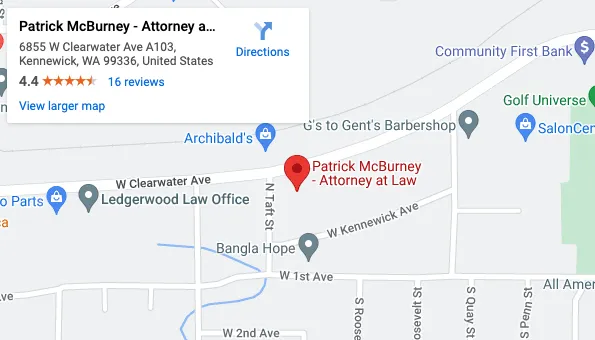It’s terrifying to apply for bankruptcy when fearing the destruction of your financial future. And wondering whether you can borrow again with a marred credit score and bad financial decisions.
Without a healthy credit report, future lenders won’t consider you after the application’s filing date. This leads most bankruptcy filers to believe they are at the mercy of debt collectors and the judge when it comes to their credit reports.
We’re glad to tell you there is hope. Even if a Chapter 7 or Chapter 13 bankruptcy negatively impacts your borrowing power, it won’t last forever.
Continue reading to learn more about how to tackle bankruptcies as it pertains to your credit report.
How Long Does Bankruptcy Stay on your Credit Report?
Depending on the type of bankruptcy, you’ll experience different timelines for it staying on your record.
Chapter 7
Filing for Chapter 7 bankruptcy means waiting up to 10 years before restoring your credit report to normal. This means that future lenders, financial advisors, banks, and other institutions all have access to your money management failures.
The wait time for Chapter 7 is longer since the bankruptcy option discharges debt in 4-6 months. If you opt for Chapter 13, the courts walk you through a lengthy repayment plan instead.
Chapter 13
7 years is all it takes to erase a tumultuous Chapter 13 bankruptcy from your financial records. A bankruptcy attorney can partner with you and the government to create an affordable plan that repays all debts.
As a result, auto and home lenders feel you are more responsible and trustworthy. Chapter 13 bankruptcies create shorter redemption on your credit report, giving the family a clean slate again.
Can you Remove Bankruptcy from your Credit Report?
Sadly, you cannot remove bankruptcies from the credit report, no matter how hard you try.
Discharging outstanding loans and being seen as a non-offender in the eyes of lenders requires waiting 7-10 years. The timeline is worth it since you learn the best spending and borrowing practices to steward your credit report more wisely.
If your financial institution declared bankruptcy on your behalf in error, you could fight the claim. Experienced bankruptcy attorneys can also help dispute these claims in person or over Zoom.
How to Rebuild Credit after Bankruptcy
While bankruptcy feels like death to your financial health, attorneys assist you with the rebuilding process. A series of past financial mistakes do not have to define you forever and alter your perspective on spending and borrowing.
Move forward by putting these rebuilding practices into place as you move along bankruptcy and even continuing afterward.
Review your Credit Reports
Again, credit reports make mistakes sometimes and may not account for the 7-10 timeline passage. You could be pigeon-holed by an agency refusing to see the work you’ve done to repair your credit score.
We recommend checking Experian, Equifax, and Transunion for accurate and up-to-date credit reports and cross-checking them in case they differ. Ensure all accounts in your bank were discharged properly for the institution to remove them.
Never Miss a Payment
Missed payments is a primary factor that led you down the rabbit hole of bankruptcy. It can also deteriorate your FICO score again if you’re not careful.
This series of forgetting to pay or not having enough in your account at the time of withdrawal can lead to defaulting on the loan. If you’ve already defaulted on the loan once, it looks very bad to do it again.
Keep your Credit Utilization Ratio Low
In general, you can improve the credit report and even increase the score steadily by reducing the spending usage rate and credit limit.
What most people don’t know is that this figure contributes to 30% of how companies calculate your credit score. Abiding by this piece does most of the work to maintain lasting financial health.
Consider Applying for a Secured Credit Card
Secured credit cards are a great way to control your spending while building credit at the same time. You’ll often hear people say they must use credit cards to build credit but at the same time fuel financial irresponsibility.
Especially with a history of spending more than you earn, secured credit cards keep you to only what’s in the account. Financial advisors recommend them as a teaching tool while learning to take control of your money again.
Become an Authorized User on a Credit Card
Finally, your credit score can increase through a trusted friend or family member’s responsible spending. Simply ask them to add you as an authorized user and purchase necessities through their account per usual.
Your frivolous purchases, layaway plans, and other mistakes deteriorate the primary card holder too. So be careful how you proceed and have a few serious conversations before moving forward.
Bounce Back from Bankruptcy with an Attorney
Knowing how long bankruptcy remains on your credit report doesn’t support you for the journey. Besides, you got yourself into bankruptcy in the first place by spending, borrowing, and “saving” on your own.
Patrick McBurney and his experienced attorneys are here to walk you through the bankruptcy process and help you take steps to restore the credit report. They work with you in-person or over Zoom to consult your case for the best path forward.
We’ve helped thousands of families who filed for bankruptcy since 1995 in Eastern Washington.
To speak with him and our empathetic team, give us a call at (509)-374-8996 today.


